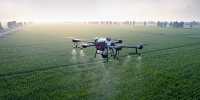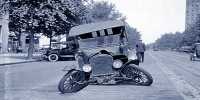If you’ve never picked a raspberry before, that’s a shame, since a fresh raspberry is a lovely thing. Second, and more importantly in this situation, you would be unaware that there is a method to it that, shockingly, robots aren’t really excellent at since they are… crushy. However, the Swiss researchers’ robo-berry might herald in a new era of delicate, automatic robo-pickers. Picking a raspberry is as simple as gripping it just enough to acquire purchase and then pulling it downwards off the little stem, which appears to be backwards and is allegedly termed the “receptacle.”
Our hands are among the most delicate and precisely regulated creations in the cosmos, the culmination of a hundred million years of evolution, rivaled only by (I assume) raccoons. Robots just lack the sensibilities required to figure out the best method for harvesting berries. But what if it could speak with the berry to gain a better understanding of the dynamics at work and avoid either a violent crushing or a humiliating failure-to-detachment?
That’s what Kai Junge, a PhD student at EPFL in Switzerland, hopes to do with his “sensorized raspberry,” a silicone and silicon imitation fruit that feeds back to the picking machine, allowing it to learn to pick quicker, better, and cleaner.
“As robotics engineers, it’s a fascinating challenge,” said Professor Josie Hughes, who worked on the project alongside Junge. “Wasting raspberries is just not an option since the harvesting season is so short and the fruit is so precious. Furthermore, the expense and logistical hurdles of field testing various solutions are prohibitive. That’s why we chose to conduct our research in the lab and create a raspberry replica to teach harvesting robots.”
The difficult phase, it appears, occurs just before detaching, when the effort required to grasp the berry on the receptacle suddenly becomes excessive as the item transforms from solid to hollow. A fluidic sensor in the replica berry tells the system how much compression the silicone drooplets are experiencing, allowing the control model to learn how to change its grasp as though the berry itself is informing it how much is too much. In April, the team aims to showcase their findings at RobotSoft. Once they’ve settled on the raspberry, they can go on to other berries, tomatoes, grapes, and even apricots. The future appears to be bright!
















